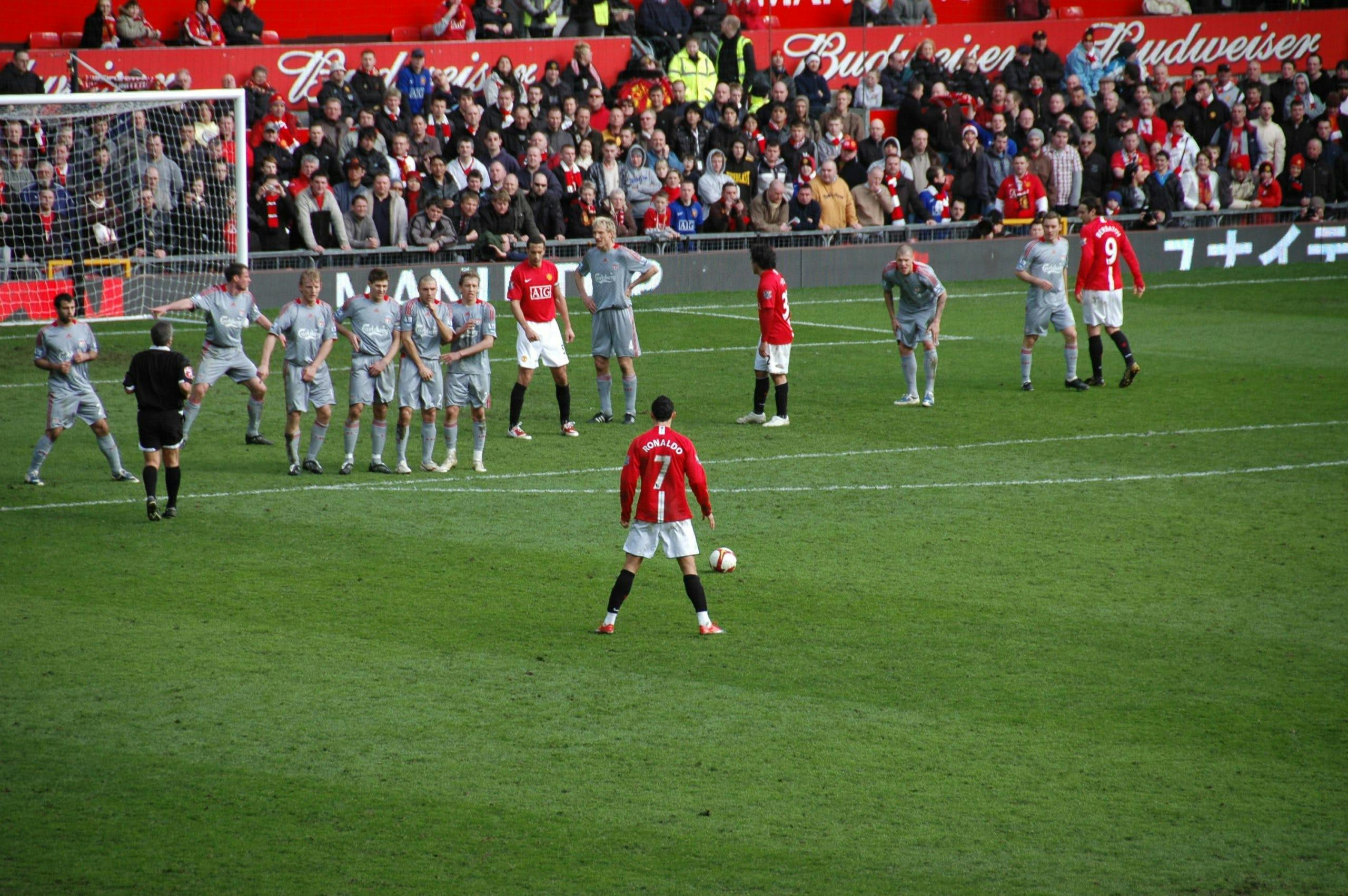Sports Leagues Aren’t As Competitive As You Might Think
Professional sports leagues are all about winning. Yet perhaps more importantly, they are about money (and the talent that can be bought with it). With Russian oligarchs and Emirs buying up teams in many sports leagues worldwide, a schism is being wedged between teams — those who are backed by the fat cats and are oozing with talent at the top of the table, and the have-nots at the bottom who find themselves barely able to stay in the league.
Competitive balance — considered a central requirement for maintaining spectator interest and therefore the success of leagues — is weakening in many leagues. Behavioral science and the results of experiments shed some light on how team ownership can erode competitive balance, and why leagues may not wish to push for reforms.
Team ownership and competitive balance
Professional team sports are classic examples of business cartels. However, while sports leagues face a host of incentive and enforcement problems discussed often in literature, they are different in one important and paradoxical respect: Sports leagues are in the business of selling competition. To be successful, a league has to ensure a competitive balance between the teams while keeping the spectators happy. Spectator preferences can be defined as being related to the performance of teams vis-à-vis each other. In other words, it is competitive balance, or the quality of contest between teams, that matters to viewers.1,2,3,4
Competitive balance is dependent on the motivations of team owners. While we cannot be certain what objectives (profit-maximization, win-maximization, or utility-maximization subject to minimum profits) team owners individually and jointly have, we can at least be sure that they all want to put together a team that will simultaneously maximize performance and improve attendance and revenues when they compete.5
Behavioral Science, Democratized
We make 35,000 decisions each day, often in environments that aren’t conducive to making sound choices.
At TDL, we work with organizations in the public and private sectors—from new startups, to governments, to established players like the Gates Foundation—to debias decision-making and create better outcomes for everyone.
Money talks
Wealthy owners for whom winning is a matter of pride over anything else — or, more specifically, wealthy owners with a philanthropic bent who wish to restore pride to, say, an impoverished city — might focus purely on winning by buying the best players on the market. So long as the money is being spent, team losses can be subsidized through other means such as the side business ventures that provided the owners to capital to buy the teams in the first place.6,7
Such owners can then put together superstar teams that out-compete teams with owners who cannot spend as much, thus reducing competitive balance.
Take the English Premier League (EPL), for example. Sports analysts identified a sharp increase in spending on players in the last two decades, especially by the wealthiest clubs, leading to a decline in competitive balance in the league starting around 1994-95. Research has shown that during the 1980s and early 1990s, when spending was relatively lower, the competitive balance of the league was average or higher than average compared to other large European football leagues.8
Decoding imbalance: underdogs, superstars, disengagement
In the EPL, the competition for top honors has become relevant only to the top quartile of the league where teams spend extraordinary sums to get top talent and play at a ‘different level’. The lower tier cannot realistically compete with the top teams and instead choose to focus on avoiding relegation.9,10 The superiority of the top clubs is remarkable no matter which statistic we observe.
The gulf between the haves and have nots is immense. In the 2018-19 season, Manchester City accrued 98 points, behind the 100 points it accrued the previous season. Manchester City won ten matches by at least three goals – meaning 25 percent of its games were effectively a no contest.
In 67 matches last season, one of the top six teams had the ball for around 70 of the 90 minutes, essentially dominating the flow of the game. The FA Cup final, an important fixture in the English football season, was one-sided with Manchester City thrashing Watford, a team who finished mid-table, 6-0.
Top dogs, top dollars
It comes as no surprise that the top teams make much more money than the bottom teams — the best teams fill seats in stadiums, get global audiences, and earn more television revenue. From 2008-09 till 2017-18, collective revenues for the top six teams rose by £247 million and revenues for the remaining 14 clubs fell by over £10 million.11
Some analysts argue that a talent gap can lead to improved performance by the weaker team, as explained by the ‘underdog effect’, which states that weaker teams work harder to beat lower expectations.12 Whether this could happen in a sustained manner through an entire season is, however, up for debate. When individuals with unequal talents compete, the less talented competitors may ‘give-up’ while the high-ability players waltz to victory. In other words, the relatively less talented athletes wilt under a ‘superstar effect’.
The AI Governance Challenge
For example, data suggests that Tiger Woods’ PGA Tour earnings were higher by $6 million between 1999 and 2006 because his competitors suffered the superstar effect.13 A similar effect is observed in competition between teams as well. Experiments have shown that if the gap in talent is large, the weaker team disengages.14 With respect to leagues like the EPL, these effects could explain the drop in competitive balance.
Unbalanced leagues: overcoming bottlenecks for change
The million-dollar question then is why do highly imbalanced leagues exist? For one, there could be a status quo bias for the top teams. Playing against (and dominating) weaker opponents could make good television in today’s world, where video bytes of Messi dribbling past a hapless opponent is what a global audience wants to see. It might then be the case that competitive balance is not what the top teams seek.
Another reason why both strong and weak teams might not wish to reform a league can be explained by the sunk cost fallacy. While it might be in the interest of all teams to break up a league and find alternative structures, existing investments in the league and revenue streams may stop teams from doing so, even if they are not making profits.
For example, although there has been chatter about the top teams from the big European leagues breaking away and forming their own ‘super’ league — one that will boast the best talent and the highest competition — putting a league together with the right contracts, TV rights, and fan support, among other considerations, is hard to accomplish.
There are measures sports leagues like the EPL can take to restore competitive balance if they choose to do so — after all, spectator or viewer contentment is key to a league’s success. Some popular measures include:
- Cross-subsidizing weak teams: League revenues can be redistributed to compensate the weaker teams for their low incomes. League revenues could include national and domestic TV revenues, gate fees, etc.
- Managing team inputs: Controlling team inputs can have a strong effect on competitive balance. For example, reserve clauses in player contracts allow teams to retain rights to players even upon the contract’s expiration; essentially, players cannot act freely to choose who they will play for.
- Salary caps: Limiting what teams can spend can also go a long way in ensuring top players are available, at least in theory, to all teams in the league.
- Rookie drafts: Drafts are another popular method to ensure talent is distributed equally amongst teams in the league, such that teams that finish lower in the league tables get to choose new talent entering the league sooner than the better performing teams.
While it is true that almost all leagues take some measures to maintain competitive balance, which ones are chosen and to what degree they are complied with will ultimately depend on how well the interests of different teams and the league itself are aligned.15,16
References
1. Fort, R. Quirk, R (1995). Cross-Subsidization, Incentives, and Outcomes in Professional Team Sports Leagues. Journal of Economic Literature, Vol. 33, No. 3 (Sep., 1995), pp. 1265-1299
2. Cyrenne, P (2009). Modelling Professional Sports Leagues: An Industrial Organization Approach. Review of Industrial Organization, Vol. 34, No. 3, pp. 193-215
3. Vrooman, J (2009). Theory of the Perfect Game: Competitive Balance in Monopoly Sports Leagues. Review of Industrial Organization, Vol. 34, No. 1, Economic Issues in Sports, pp. 5-44
4. Brook, S (2005). What Do Sports Teams Produce? Journal of Economic Issues, Vol. 39, No. 3, pp. 792-797
5. Zimbalist, A (2003). Sport as Business. Oxford Review of Economic Policy. Vol. 19, No. 4, The Economics of Sport, pp. 503-511
6. Burdekin, R.C.K. Franklin, M (2015). Transfer spending in the English Premier League: The Haves and the Have nots. National Institute Economic Review. No. 232, pp. R4-R17
7. Lang, M. Grossmann, M. Theiler, P (2011). The Sugar Daddy Game: How Wealthy Investors Change Competition in Professional Team Sports. Journal of Institutional and Theoretical Economics (JITE) / Zeitschrift für die gesamte Staatswissenschaft. Vol. 167, No. 4, pp. 557- 577
8. Burdekin, R.C.K. Franklin, M (2015). Transfer spending in the English Premier League: The Haves and the Have nots. National Institute Economic Review. No. 232, pp. R4-R17
9. Borooah, V.K. Mangan, J. (2012), ‘Measuring competitive balance in sports using generalized entropy with an application to English premier league football’, Applied Economics, 44,9, pp 1093-102
10. Manchester City, Liverpool, Chelsea, Arsenal, Manchester United
11. Heren, K. (2019). The Premier League’s inequality diminishes English football, The Article. Retrieved from https://www.thearticle.com/
12. S, Nurmohamed (2019). The Underdog Effect: When Low Expectations Increase Performance. Academy of Management Journal
13. Brown, J (2011). Quitters Never Win: The (Adverse) Incentive Effects of Competing with Superstars. Journal of Political Economy, Vol. 119, No. 5, pp. 982-1013
14. Hargreaves Heap, S. Ramalingam, A. Ramalingam, S. Stoddard, B (2015), “‘Doggedness’ or ‘Disengagement’? An Experiment on the Effect of Inequality in Endowment on Behavior in Team Competitions,” Journal of Economic Behavior and Organization, 120, 80-93
15. Szymanski, S (2010). Teaching Competition in Professional Sports Leagues. The Journal of Economic Education, April-June 2010, Vol. 41, No. 2, pp. 150-168
16. Che, X. Humphreys, B (2015). Competition Between Sports Leagues: Theory and Evidence on Rival League Formation in North America. Review of Industrial Organization, Vol. 46, No. 2
About the Author
Siddharth Ramalingam
Siddharth’s diverse education and experience feed his interest in the applicability of behavioral science in understanding our world and solving big problems. His work encompasses international development, consulting, finance, and social innovation. Apart from an MPA from Harvard University, he also has graduate degrees in Political Theory, Human Rights Law, Management, and Economics.





